The name of a substance is given to a student. He was asked to write its formula. What is the systematic method to be followed to derive the formula? Arrange the given statements in a proper sequence to obtain the formula.
(1) Symbol of positive ion or radical should be placed to the left-hand side and symbol of negative ion should be placed to the right-hand side.
(2) Place the valency with charge of respective radicals on the top right hand corner of their symbols.
(3) Write the symbols of the respective ions or radicals present in the given compound.
(4) Criss-cross the valency on the lower right hand side of ions/radicals.
(5) A radical consisting of more than one element has to be enclosed within the brackets if the respective number attained in criss-cross is more than one.
(6) No space should be left in between oppositely charged ions while writing the formula.
3 1 2 4 5 6
4 3 6 2 5 1
4 1 3 2 4 6
5 6 4 2 1 3
To derive the chemical formula of a substance systematically, follow these steps in the correct order:
1. Write the Symbols of the Ions or Radicals:
Begin by identifying and writing down the symbols of the respective ions or radicals present in the compound. For example, for sodium chloride (NaCl), you would write Na for sodium and Cl for chlorine.
2. Position the Ions:
Place the symbol of the positive ion (cation) on the left-hand side and the symbol of the negative ion (anion) on the right-hand side. For NaCl, it would be Na on the left and Cl on the right.
3. Indicate Valencies:
Write the valency (charge) of each ion or radical in the top right corner of their respective symbols. For example, Na has a valency of +1, and Cl has a valency of -1, so you would write Na^1 and Cl^1.
4. Criss-Cross the Valencies:
Next, criss-cross the valencies. This means that the valency of the positive ion becomes the subscript of the negative ion and vice versa. For NaCl, since both have a valency of 1, the formula remains NaCl.
5. Use Brackets for Complex Radicals:
If any of the radicals consist of more than one element, enclose them in brackets if the respective number attained from criss-crossing is more than one. For example, in ammonium sulfate (NH4)2SO4, the ammonium ion (NH4) is enclosed in brackets because it is a polyatomic ion.
6. Final Formula Without Spaces:
Finally, ensure that there are no spaces left between the symbols of the oppositely charged ions when writing the final formula. For NaCl, it should be written as NaCl without any spaces.
Final Sequence:
The correct order of the steps is:
1. (3) Write the symbols of the respective ions or radicals present in the given compound.
2. (1) Symbol of positive ion or radical should be placed to the left-hand side and symbol of negative ion should be placed to the right-hand side.
3. (2) Place the valency with charge of respective radicals on the top right hand corner of their symbols.
4. (4) Criss-cross the valency on the lower right hand side of ions/radicals.
5. (5) A radical consisting of more than one element has to be enclosed within the brackets if the respective number attained in criss-cross is more than one.
6. (6) No space should be left in between oppositely charged ions while writing the formula.
Begin by identifying and writing down the symbols of the respective ions or radicals present in the compound. For example, for sodium chloride (NaCl), you would write Na for sodium and Cl for chlorine.
Place the symbol of the positive ion (cation) on the left-hand side and the symbol of the negative ion (anion) on the right-hand side. For NaCl, it would be Na on the left and Cl on the right.
Write the valency (charge) of each ion or radical in the top right corner of their respective symbols. For example, Na has a valency of +1, and Cl has a valency of -1, so you would write Na^1 and Cl^1.
Next, criss-cross the valencies. This means that the valency of the positive ion becomes the subscript of the negative ion and vice versa. For NaCl, since both have a valency of 1, the formula remains NaCl.
If any of the radicals consist of more than one element, enclose them in brackets if the respective number attained from criss-crossing is more than one. For example, in ammonium sulfate (NH4)2SO4, the ammonium ion (NH4) is enclosed in brackets because it is a polyatomic ion.
Finally, ensure that there are no spaces left between the symbols of the oppositely charged ions when writing the final formula. For NaCl, it should be written as NaCl without any spaces.
The correct order of the steps is:
1. (3) Write the symbols of the respective ions or radicals present in the given compound.
2. (1) Symbol of positive ion or radical should be placed to the left-hand side and symbol of negative ion should be placed to the right-hand side.
3. (2) Place the valency with charge of respective radicals on the top right hand corner of their symbols.
4. (4) Criss-cross the valency on the lower right hand side of ions/radicals.
5. (5) A radical consisting of more than one element has to be enclosed within the brackets if the respective number attained in criss-cross is more than one.
6. (6) No space should be left in between oppositely charged ions while writing the formula.
Topper's Solved these Questions
- BOOK - PEARSON IIT JEE FOUNDATIONCHAPTER - AIR AND OXYGENEXERCISE - SHORT-ANSWER TYPE QUESTIONS15videos
AIR AND OXYGEN
- BOOK - PEARSON IIT JEE FOUNDATIONCHAPTER - AIR AND OXYGENEXERCISE - ESSAY TYPE QUESTIONS5videos
AIR AND OXYGEN
- BOOK - PEARSON IIT JEE FOUNDATIONCHAPTER - ATOMIC STRUCTUREEXERCISE - Level 310videos
ATOMIC STRUCTURE
Similar Questions
Knowledge Check
- Question 1 - Select One
A rigid massless beam is balanced by a particle of mass 4m in left hand side and a pulley particle system in right hand side. The value of xy is
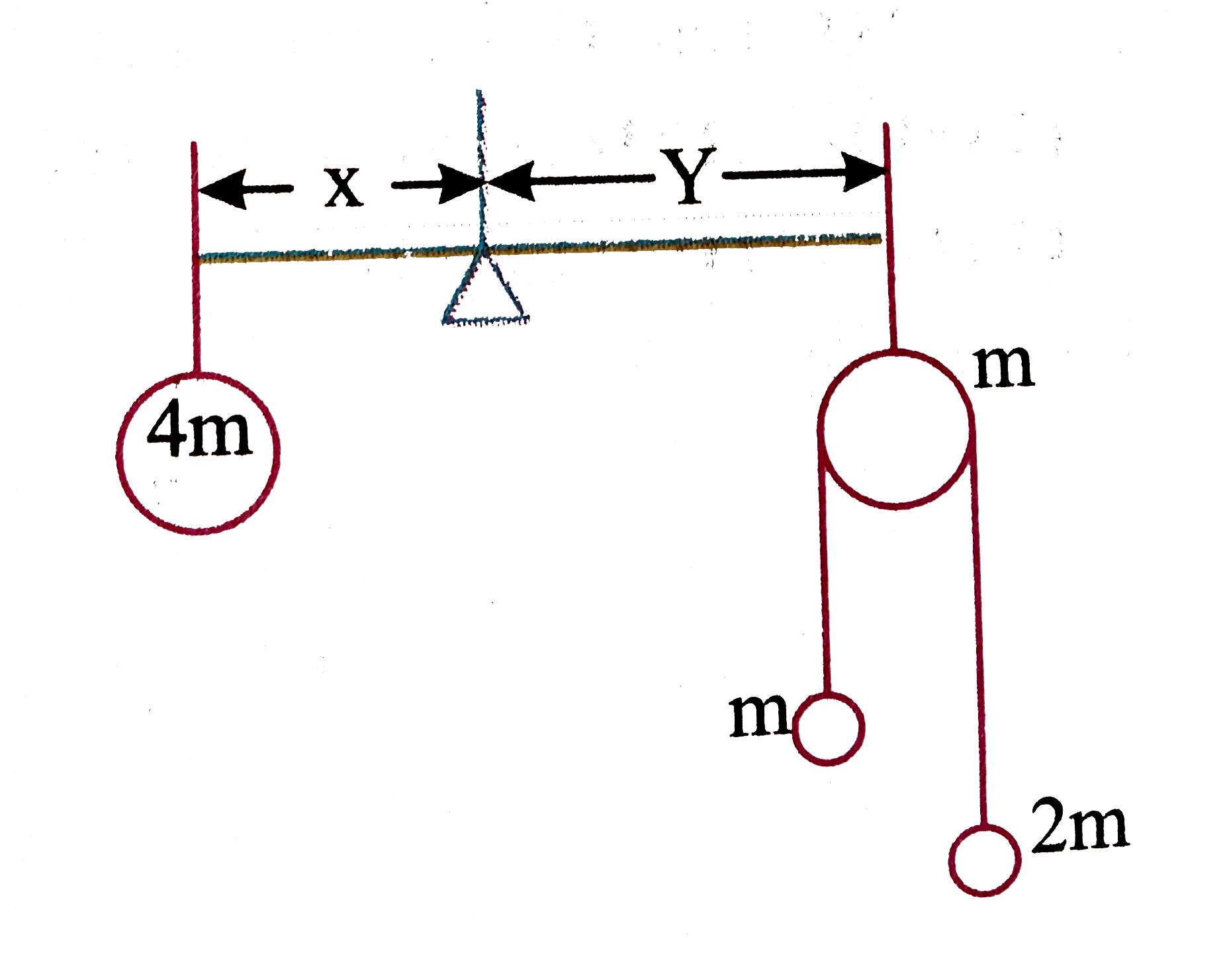 A76B56C1:1D11/12
A76B56C1:1D11/12 - Question 2 - Select One
Arrange the following points in a sequence for derivation of formulae of compounds.
(1) The valencies of the ions or radicals are written below the radicals without positive and negative sign
(2) If the valencies have common factors, then they are divided by the highest common factor.
(3) The magnitude of valencies should be inter changed and written as subscripts on the right side of the respective ions.
(4) The positive radical followed by negative radical are written with their charges.
(5) If the radicals contain more than one atom, they are enclosed in brackets and the appropriate valency (more than one) written as subscriptsoutside the bracket.A2, 3, 4, 5, 1B4, 1, 3, 2,5C1, 2, 3, 4, 5D4, 1, 2, 3,5 - Question 3 - Select One
Arrange the following point in sequence for derivation of formulae of compounds.
(a) The valencies of the ions or radicals are written below the radicals without positive and negative sing.
(b) If the valencies have common factors , they are divided by the highest common factor.
(c ) The magnitude of valencies should be interchanged and written as subscripts on the right side of the respective ions.
(d) The positive radical followed by negative radical are written with their chatges.
(e) If the radicals contain more than one atom , they are enclosed in brackets and the appropriate valency (more than one ) written as subscripts outside the bracket.AbcdeaBdacbeCabcdeDdabce
One part of square is on the left-hand side and the other one is among the four figures (A), (B), (C ) and (D) on the right-hand side. Find the figure on the right-hand side that completes the square. Write the letter given below that figure in the given box.
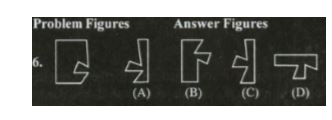 View Solution
View SolutionOne part of square is on the left-hand side and the other one is among the four figures (A), (B), (C ) and (D) on the right-hand side. Find the figure on the right-hand side that completes the square. Write the letter given below that figure in the given box.
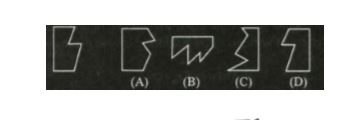 View Solution
View SolutionOne part of square is on the left-hand side and the other one is among the four figures (A), (B), (C ) and (D) on the right-hand side. Find the figure on the right-hand side that completes the square. Write the letter given below that figure in the given box.
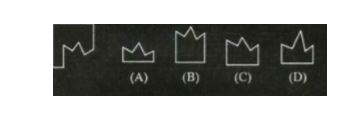 View Solution
View SolutionOne part of square is on the left-hand side and the other one is among the four figures (A), (B), (C ) and (D) on the right-hand side. Find the figure on the right-hand side that completes the square. Write the letter given below that figure in the given box.
 View Solution
View SolutionOne part of square is on the left-hand side and the other one is among the four figures (A), (B), (C ) and (D) on the right-hand side. Find the figure on the right-hand side that completes the square. Write the letter given below that figure in the given box.
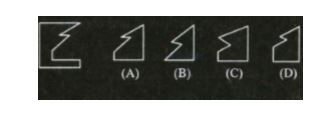 View Solution
View Solution

